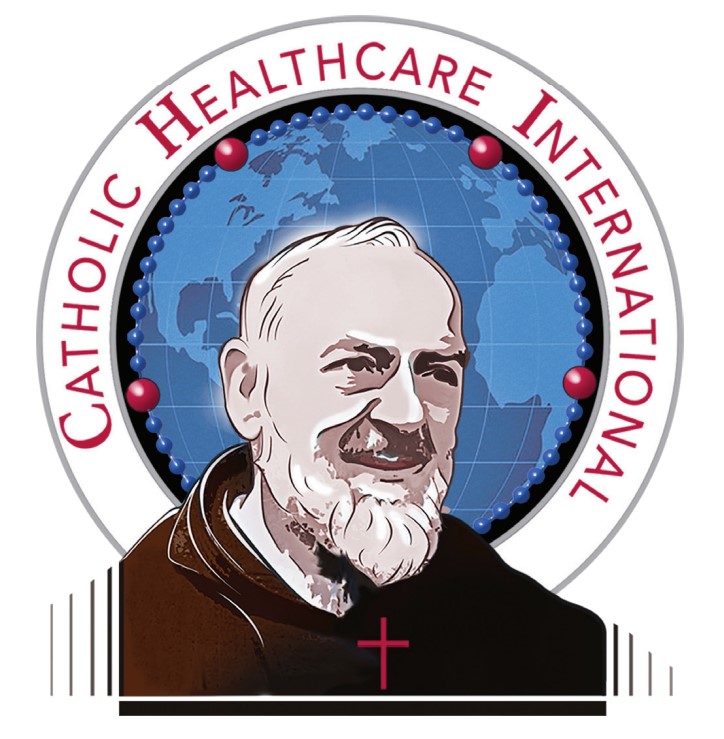Murder for Amateurs
We have previously discussed the horrendous behavior of physicians, particularly in Nazi Germany, conducting research on living humans (1). Time and time again, history has shown that physicians are not more ethical, villainous or virtuous than anyone else. They do hold a position of advantage over the general public in that they are experts in a highly technical and refined field, requiring significant academic achievement and training to master their craft. Physicians encounter people at their most vulnerable, at a time of illness and crisis, and, for the most part, people entrust their lives and well-being to them, as medical subject matter is beyond the grasp of most laypeople outside of the profession. We pray that our physicians are ethical and virtuous and trust in the checks and balances of medical licensing and credentialing systems to assure a level of quality. Most of the time, this works well, although physician behavior and quality are largely self-policing. Hence, there is no shortage of “Dr. Death” stories and TV shows, illustrating what happens when the system fails and the miscreants slip through cracks that are a lot wider than we would like to believe. Physicians have been responsible for many of the modern miracles of medicine and have helped countless billions of people to live better lives; they have also been responsible for the murder of millions, in pursuit of political, racial or other ideologies. Lest we forget, the genocide of 65 million children following the Roe v Wade decision legalizing abortion was accomplished by the ready, willing and able participation of physicians. Now, in the post-Dobbs era, we continue to see physicians advocating for “reproductive health care” with a complete disregard for unborn human life. These same physicians walk hand-in-hand, down the road of death and perdition, together with pharmaceutical companies and the Biden administration, in their bloodlust to bring murder to your mailbox via pills, that is, “chemical abortion” (aka, human pesticide). Not to lose out on a business opportunity, CVS and Walgreens are ready to play their part in the thantological-industrial complex and are a one-stop shop for cold medicine, cosmetics, toothpaste and poison designed to kill unborn human beings. (Hopefully, they put the abortifacients on the shelf away from baby shower greeting cards.)
For every physician who is fascinated with life and health, there seems to be a physician fascinated with death. For every Schweitzer, there is a Mengele. Indeed, one need not look very far to find physicians doing great business and achieving notoriety in murdering, I mean, providing “death with dignity” to patients (including children) suffering from terminal illnesses (or mental illness, or loneliness, or poverty – I’m looking at you, Canada.) This is a topic for another day, but I have met a few of these “doctors,” including the author of Oregon’s assisted suicide law, and trust me, they are kind of ghoulish in their fascination with death. One such ghoul is Étienne-Émile Baulieu. Looking at pictures of Dr. Baulieu, he seems more erudite and French than ghoulish, and should be enjoying a coffee and croissant on the Champs-Élysées rather than killing children; but looks can be deceiving. Born in 1926 to Jewish parents, Émile Blum, would change his name to Baulieu and join the French resistance in World War II. Following the war, Baulieu attended medical school in Paris, obtaining an MD in 1955 and, studying further, obtained a Ph.D. in 1963, investigating steroid hormones. It is difficult to know what motivates people. Sometimes, there is a specific fascination with death, as in the case of Jack Kevorkian (a ghoul to rival Gomez Adams), or sometimes it is a trip down a scientific rabbit hole, divorced from ethical considerations. Sometimes it is misplaced ethics and the pursuit of false ideals. If one believes the pro-abortion literature, Dr. Baulieu was purportedly motivated to develop a better abortion method after observing the results of women attempting self-abortions using sticks and other implements (2). Sometimes, evil just needs a critical mass of people to come together in a recipe for destruction. In Baulieu’s case, perhaps it was the inspiration and guidance of his mentor, Gregory Pincus, creator of the first hormonal oral contraceptive. Using the lessons of Pincus, Baulieu developed the first “abortion pill,” RU-486, also known as mifepristone, which was brought to market in France in 1988 (3). By 2000, when mifepristone was approved for use in the United States, it had gained widespread use in Europe and Asia, especially China (big surprise, right?) and accounted for over 22% of abortions in France (3). Baulieu has received widespread accolades in France and beyond as “father of the abortion pill” (not sure I’d want that on my tombstone), including the prestigious Lasker Prize, which has been called a “forerunner” to the Nobel (3). For those of you that think San Francisco and California have only deteriorated recently, in 1989, eleven years before mifepristone was approved in the US, Baulieu received a commendation from the San Francisco Board of Supervisors reading, “For his discovery of the contragestion pill, RU-486, and with the fond hope that it may very soon be available to women throughout the world and particularly in the United States and San Francisco (3).” Looks like the San Francisco Board of Supervisors really had their priorities straight, no? Baulieu was also a member of the French Communist party for a while, so all the more reason for accolades from San Francisco.
Mifepristone works by blocking progesterone. Progesterone is the signaling hormone that causes the uterus to thicken its lining in order to provide blood and nutrients for an implanted embryo/fetus/child (or clump of cells, for you pro-aborts) to grow and develop. Blocking progesterone causes the child to lose this blood and nutrition supply, killing it. Thus, mifepristone is the first drug taken in the two-pill chemical abortion regimen and is the drug directly responsible for the death of the unborn child. This also makes it the subject of the most notoriety and legislation. While mifepristone has been found to be beneficial in other conditions, such as the management of high blood glucose in Cushing ’s syndrome, and as an adjunct to treatment of certain hormonally-responsive uterine tumors, that is, fibroids (4). These are incidental to its intended use and discovered after mifepristone came to the market, as commonly happens with alternative uses for many medications (including Viagra, but that is a story for another day). Legislation to protect unborn life, including a lawsuit currently before a Texas federal court to revoke its approval, is targeted at mifepristone. This is the first only drug developed by a pharmaceutical company specifically for the purpose of ending a human life.
The second of the two-drug chemical abortion regimen is misoprostol, touted by the pro-aborts as the “hero” in the two-pill murder method. A lot less glamorous than its lethal counterpart, misoprostol was developed in 1973 to treat gastric ulcers (5). It was, and is, used to decrease acid production in the stomach and protect the stomach lining from the effects of non-steroidal anti-inflammatory drugs and aspirin. (It has largely been replaced by better alternatives for this use.) One of the well-known side effects of misoprostol is the stimulation of uterine contractions. Indeed, misoprostol’s package insert (information mandated by the FDA and included with every drug) warns against its use in pregnancy, as it can cause premature labor and miscarriage. In the 1980s, feminists in Brazil realized that this side effect could be used to terminate pregnancies and started using misoprostol to great effect (2). Indeed, before the widespread availability of mifepristone and in regions where mifepristone is not available (one report cited refugee camps on the Thailand-Burma border) the single-drug method of ending a pregnancy through misoprostol alone is effective 78-93% of the time (2).
So, in a two-drug protocol, the first drug, mifepristone, kills the child, and the second, misoprostol, causes the uterus to expel it. As one might imagine, this is an unnatural and difficult process. Essentially, this chemical warfare is inducing a miscarriage. Anyone who has experienced a miscarriage can attest to the fact that this is an extraordinarily traumatic, painful and, occasionally bloody (and life-threatening) experience. The pro-abortion cheerleaders would have you believe that the process of killing and expelling the unborn life is nothing much more than a particularly heavy menstrual cycle, with a little more cramping. To quote Planned Parenthood, “It’s kind of like having a really heavy, crampy period (6).” Maybe not so much. In 1989 (or 1990, I don’t recall,) I was a junior anesthesiology resident at an Ivy-League institution in the Northeast. Part of my training involved covering the acute pain service, which was the hospital service responsible for managing post-operative pain with narcotics and other methods. As mifepristone had just been released in France, our hospital was able to do a clinical research study examining its use for elective abortion. All of the study patients were placed on a particular hospital unit and the acute pain service saw the patients and prescribed potent narcotics (usually morphine and Demerol) to manage what was reported to be a very painful process. Painful enough to be hospitalized and managed by an anesthesiology pain service more accustomed to treating pain following major surgery. My knowledge is limited, as I declined to participate in that service. (To the credit of a large, liberal institution, my rights of conscience were observed without negative consequence. Hopefully they still honor those sorts of rights today.) Apparently, the use of a single drug, misoprostol, is even more painful, as it is more difficult for the uterus to expel the implanted and still living embryo (2).
Regardless of the regimen used, chemical abortion is fairly effective, with “success” rates of 80-95%, depending on which studies are reviewed (7). This means that somewhere between 5 and 20% of women undergoing a “simple” chemical abortion will need additional intervention, usually surgical evacuation of the uterus. That may not sound like a lot to a layperson, but to those of us in medicine, complications in a 2-3% range are a huge amount. A lot of people think undergoing general anesthesia is dangerous and have a significant fear of undergoing anesthesia for surgery. There is a definite risk of death from anesthesia, but it is approximately one in a million (8). When compared to the risk of complications from chemical abortion, the risk of death from anesthesia is so small as to be non-existent. Open heart surgery, which is undertaken in extreme circumstances in an attempt to save a patient’s life, only has a 2-3% risk of death (9). If anesthesia had the same risk as chemical abortion, I suspect grown men and women would run screaming through the streets out of fear. A gunshot wound to the body only carries a 9% risk of death,(10) yet the pro-abortion lobby would have one believe that medication abortion carries no more risk than taking a Tylenol for a headache!
Since Dobbs, we have been subjected to the pro-abortion hysteria of gnashing teeth and tearing clothes decrying the death in the streets that will result if elective abortion is not available. If I had a dollar for every time I have read “reproductive health care” in the last year, I would be wealthy, indeed. Other phrases from the echo chamber are about abortion being “safe, legal and effective.” (Not that safe for the child, but I digress.) In an effort to go around state legislation banning elective abortion, the Biden administration and FDA, that “scientific” watchdog, are doing everything they can to make chemical abortion widely available and without a physician’s supervision. It is a lot harder to regulate things sent in the mail, after all. In an effort to make these weapons of mass destruction, I mean, abortion pills, more accessible, recently, the FDA relaxed restrictions on mifepristone, making it available from retail pharmacies. Previously, the medication could only be dispensed by clinics and certain physicians. Walgreens and CVS quickly jumped on the bandwagon and announced they would carry the pills. (You can’t spell “Auschwitz” without “CVS”.) The pro-abortion lobby is even advocating for stockpiling of abortion pills and touting “self-managed” (that is, amateur) abortions.
Approval of medications by the FDA, at least until recent history, was a rigorous process intended to protect public health and safety. Not only must the medications themselves be approved, but their route of administration and conditions of administration must be approved. For example, certain anesthetics are restricted to use by a specifically-trained provider and only in certain settings. Sometimes, drugs used to regulate heart rhythm must be administered in a hospital setting with close monitoring. In the case of mifepristone, its restriction was due to the dangers of administering it without a proper diagnosis of pregnancy and at the appropriate stage. This is not surprising. Pregnancy is usually diagnosed, initially, by the presence of human chorionic gonadotropin (HCG), in either the blood or urine. However, HCG can also be produced by hormone-secreting tumors or pregnancies implanted outside the uterus, ectopic pregnancies. Administering mifepristone in such a situation can be hazardous. Additionally, mifepristone and misoprostol are approved for abortion up to 10 weeks gestation and have been used by some for up to 13 weeks. One does not have to practice medicine very long to come across women who discover they are pregnant late in their term and may not even realize they are pregnant until they come to the emergency room in labor. I have seen this myself on multiple occasions. Once one tests positive for pregnancy, it is important to be evaluated by trained medical professionals to properly diagnose the cause for HCG elevation and appropriate implantation, if pregnant. So, schizophrenically, the abortion industry simultaneously decries limitations on abortion as “unsafe” and “endangering women’s health,” while simultaneously pressuring for the removal of safeguards in the use of medication abortion. If they really cared about “women’s health,” they should advocate for closer regulation and monitoring, rather than less.
But, it was never about women’s health, it has always been about killing the unborn, by whatever means necessary. In a pathetic coda to all this, the administration is considering declaring a “public health emergency” to increase the availability of abortion, since not enough children are dying. If maternal mortality increases from the unregulated use of abortion pills, I am sure the pro-aborts will say it was “for the greater good,” and generate some “statistics” to support the false narrative.
As always, the Catholic position is direct, simple and true. All life, from the moment of conception to natural death, created in the image and likeness of God, is equally worthy and precious. Intentional killing of human life is a grave moral evil in all circumstances. Chemical abortion, by its widespread availability, use and banality is somehow more disturbing than the hand-to-hand violence of surgical abortion. Today, the vast majority of abortions in this country are conducted by these human pesticides, efficiently and quickly, coming soon to a pharmacy (or mailbox) near you.
Mifepristone and misoprostol, so much more convenient than Zyklon-B.

George Mychaskiw II, DO, FAAP, FACOP, FASA
Founding President
Saint Padre Pio Institute for the Relief of Suffering
School of Osteopathic Medicine
References
- https://www.chi-usa.com/thought-for-the-week-2-2/
- https://www.statnews.com/2023/02/10/abortion-pill-texas-mifepristone-misoprostol/
- https://www.science.org/doi/full/10.1126/science.290.5489.39
- https://www.ncbi.nlm.nih.gov/books/NBK557612/
- https://www.webmd.com/drugs/2/drug-6111/misoprostol-oral/details
- https://www.plannedparenthood.org/learn/abortion/the-abortion-pill
- https://www.ncbi.nlm.nih.gov/pmc/articles/PMC6309472/
- https://www.ncbi.nlm.nih.gov/pmc/articles/PMC2697561/
- https://www.medicalnewstoday.com/articles/312888#:~:text=However%2C%20the%20mortality%20rate%20is,a%20result%20of%20the%20operation.
- https://pubmed.ncbi.nlm.nih.gov/19213396/


